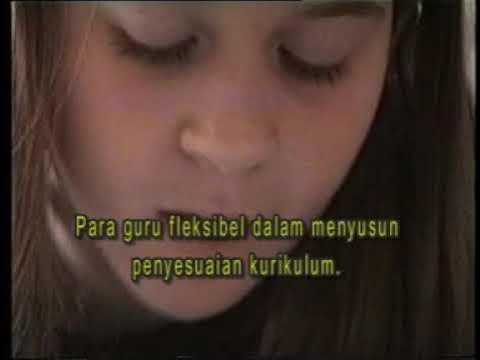Academic Success for All Students: A Multi-Tiered Approach
Summary
TLDRThe video highlights a collaborative, student-centered approach to education where teachers work together to ensure every child succeeds. The system replaces the traditional model by integrating core, supplemental, and intensive instruction (Tiers 1, 2, and 3) based on student needs. Teachers collaborate regularly to align instruction, share strategies, and monitor progress through data-driven decision-making. The goal is to provide personalized learning experiences, fostering growth in students with diverse learning needs, while enhancing both academic performance and student engagement.
Takeaways
- 🧑🏫 Teachers engage students actively by guiding them through learning processes, encouraging hands-on participation.
- 🔄 The traditional model of pulling students out for extra help has been replaced with an integrated approach that keeps students in the classroom for continuous support.
- 🧩 Collaboration among teachers is essential for the success of the new system, allowing them to make collective decisions about instruction and student needs.
- 📝 A standardized core curriculum in math and reading ensures consistency in what is taught across different classrooms and teachers.
- 📚 The instructional model is tiered: Tier 1 offers universal instruction, Tier 2 provides supplemental support, and Tier 3 delivers intensive interventions for students who need extra help.
- 📆 Teachers use autonomous learning time to focus on small group instruction, tailoring lessons to the specific needs of students in different tiers.
- 🏫 The school emphasizes moving students between different teachers and rooms based on their needs, making the learning experience more dynamic and personalized.
- 🤝 Teachers trust and communicate with each other frequently, holding weekly meetings to discuss instruction and student progress as a collaborative learning community.
- 🧑💼 The Student Success Team, composed of various stakeholders like teachers, administrators, and counselors, meets regularly to evaluate data and adjust strategies for supporting student growth.
- 📈 The new system shows significant results, with students making noticeable academic gains and progressing in percentile rankings, demonstrating the effectiveness of this integrated approach.
Q & A
What challenge do educators face today according to Lynda?
-Educators face the challenge of using available resources effectively to ensure every child's success.
How did the traditional teaching model function before the changes discussed in the script?
-The traditional model had a teacher in the classroom teaching a standard curriculum. Students who needed extra help were taken out of the classroom for additional support from another educator.
What was the key change implemented in the teaching model?
-The model was flipped by creating a more integrated system where all available resources were used collaboratively to ensure seamless support for students within the same learning environment.
Why is teacher collaboration important in the new system?
-Teacher collaboration is critical because every decision is made as a team, ensuring that students' needs are addressed collectively and that everyone is aligned in teaching the core curriculum.
What does Tier 1 instruction consist of?
-Tier 1 instruction is the core, universal instruction that every student receives in the classroom.
What is the difference between Tier 2 and Tier 3 instruction?
-Tier 2 instruction provides supplemental help beyond the core curriculum for students who need more support, while Tier 3 instruction is for students requiring intensive, individualized intervention.
How do teachers handle autonomous learning time?
-During autonomous learning time, students engage in self-directed learning, while teachers may work with small groups for Tier 2 or Tier 3 instruction.
How does the system ensure that students in different tiers are still aligned in their learning?
-Teachers across different tiers focus on the same core skills, like inferring, but use different materials or strategies depending on the student's needs. This alignment requires trust and constant communication between teachers.
What role does the Student Success Team play in the new system?
-The Student Success Team, which includes teachers, administrators, and other specialists, reviews data, monitors student progress, and adjusts teaching strategies to ensure the effectiveness of core, Tier 2, and Tier 3 instruction.
What outcomes have educators observed since implementing this system?
-Educators have seen significant growth in student performance, with some students moving from the 8th percentile to the 30th or 40th percentile or higher.
Outlines

此内容仅限付费用户访问。 请升级后访问。
立即升级Mindmap

此内容仅限付费用户访问。 请升级后访问。
立即升级Keywords

此内容仅限付费用户访问。 请升级后访问。
立即升级Highlights

此内容仅限付费用户访问。 请升级后访问。
立即升级Transcripts

此内容仅限付费用户访问。 请升级后访问。
立即升级浏览更多相关视频

Constructivism in Education

Apa Itu Pendidikan Inklusif? Membangun Sekolah Dasar yang Menyambut Semua Anak

10 Concepts About PAULO FREIRE’s Pedagogy | All You Need To Know

Collaborative Lesson Planning at UP Academy

Welcoming School Inklusif

Lernleuchten | Georg-August-Zinn-Schule Gudensberg | SONDERPREIS FÜR SCHULLEITUNGEN 2022/2023
5.0 / 5 (0 votes)
